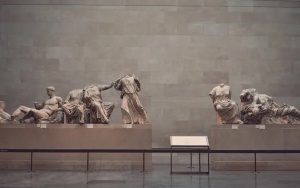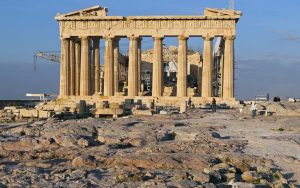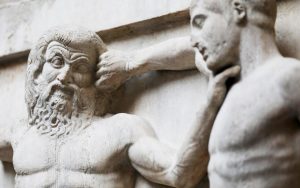Greece, Britain in Dispute Over Parthenon Marbles Meeting Delay
What do the marbles from the Parthenon mean?
Parthenon Sculptures: Marbles from Athens, 447-432 BC, featuring temple pillars, centaurs vs. Lapiths metopes, and Panathenaic festival frieze

Due to historical damages, they only include some of the original decorations while being kept in the British Museum. With a complex past covering roles as a church, mosque, and temple, the Parthenon itself is now a museum of history. About half of the original decoration is lost, but authorities have recognized and protected the remaining sculptures, which are now on display at the Acropolis Museum in Athens.
Where Did They Come From?:

The Parthenon sculptures originated in Athens, Greece. The Parthenon, which goes back to the fifth century BC, represents the might of classical Athens. SSince Greece gained independence in 1832, the Parthenon came to represent the country as a whole. After Athens assumed the role of the capital in 1834, authorities demolished the post-Roman buildings on the roof of the Acropolis. This action aimed to facilitate the process of archeological exploration and return the site to its ‘Classical’ state.
Greece and Britain blame each other for the postponed meeting over the Parthenon Marbles:
The Elgin Marbles, or Parthenon sculptures, are the source of a growing dispute between Greece and Britain. Prime Minister Rishi Sunak postponed the meeting with his Greek counterpart Kyriakos Mitsotakis to Tuesday. Citing the meeting’s decision to not bring up previously resolved issues again, both parties place blame on one another.

A spokesperson for Sunak warned that there be penalties if promises are broken.
Speaking secretly, a senior Greek official dismissed the claim as “incorrect.”Greece demands the return of the 2,500-year-old Parthenon statues that Lord Elgin stole in 1806. The 160-meter artwork divides, with 50 meters at the Acropolis Museum in Athens, mirroring the design of the Parthenon.
The British government disagreed with Mitsotakis’ comparison of the separation to chopping the Mona Lisa in half on the BBC.
According to Aristotelia Peloni, Mitsotakis’s advisor on foreign relations, Greece has a clear Parthenon stance, emphasizing that disagreements over particular topics don’t prevent conversation.
Britain and Greece assert that discussions on international issues, including Gaza, the wars in Ukraine, and climate change, are at risk. The leaders had plans to discuss a migration action plan between the UK and Greece.
Despite the issue with Sunak, Athens seeks to maintain good relations, according to Greek spokesman Pavlos Marinakis, who called the cancellation unexpected and disrespectful.
Unexpected Turn in the Story:

A meeting of NATO ministers in Brussels brought together Greek Foreign Secretary George Gerapetritis and British Foreign Secretary David Cameron.
despite the Parthenon sculptures debate, both ministers stressed how cooperation was necessary to protect Greece-UK relations.
The Parthenon Project, which called for a solution, and British opposition parties criticized Sunak’s choice.
Greece does not acknowledge ownership of the statues by the British Museum.
Without settling ownership concerns, The Parthenon Project proposes reconnecting the sculptures in Athens.
The group’s advisor, former Conservative minister Ed Vaizey, views Sunak’s decision as a startling “plot twist” from Britain’s prior position.








